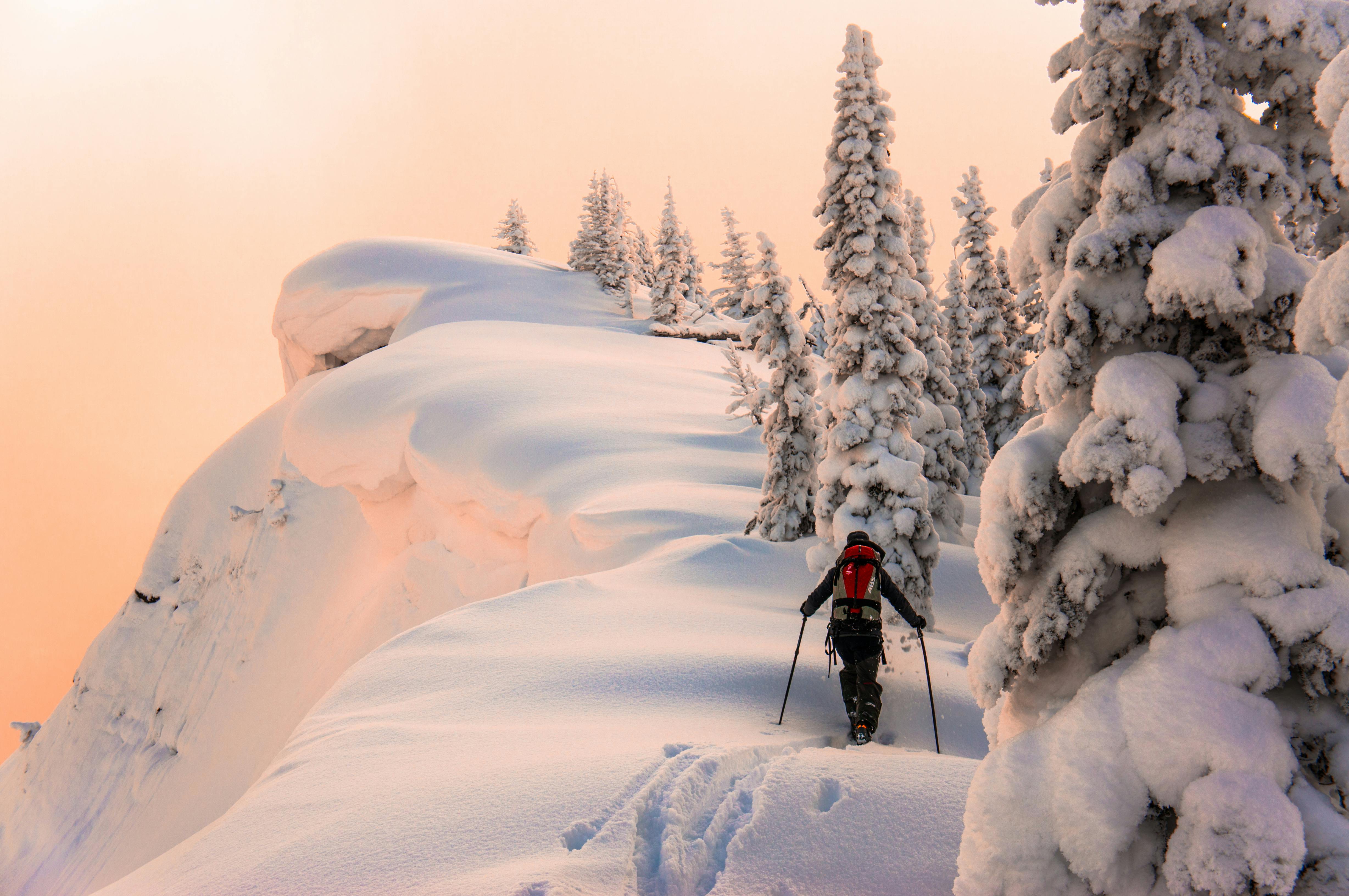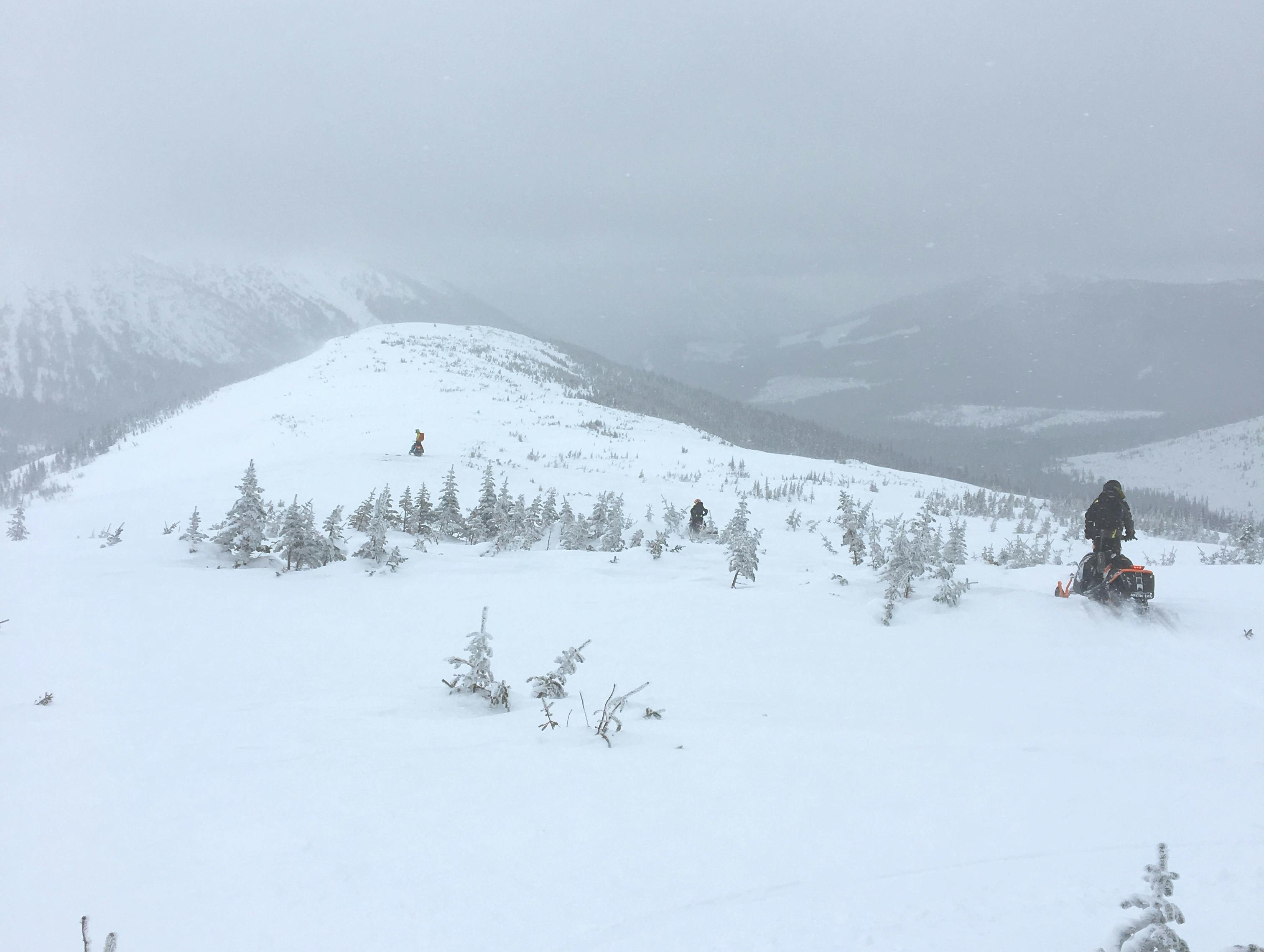
- Credit
- Raven Eye Photography

Ridgecrest and ridgetop are terms used interchangeably to describe terrain at or near the top of a ridge. Ridgetop terrain is significant for a number of reasons:
- Ridges often exist as a boundary between windward and leeward slopes.
- Ridges often exist as a safe spot in avalanche terrain, reducing or eliminating exposure to hazards from overhead or adjacent slopes.
- Ridges often offer a more efficient and lower-angle route to higher elevation when compared to gullies or draws.
- Ridges offer better sightlines on surrounding terrain than do gullies or draws.
- Cornices are most commonly formed along ridgetops.
See also: